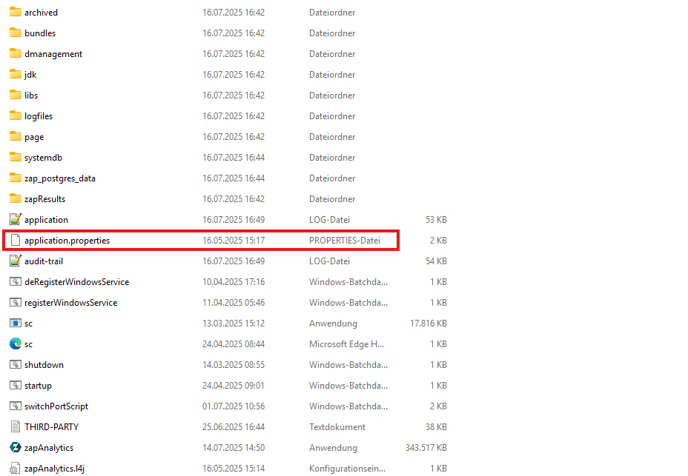Custom SSL Certificate in zapAnalytics
Step-by-Step Guide to Installing a Custom HTTPS Certificate
By default, zapAnalytics uses a non-certified HTTPS certificate. For greater security or compliance with your organization’s requirements, you can install your own SSL certificate instead.
Important: Before making any changes, ensure that zapAnalytics is completely shut down.
1. Locate the Configuration File
Go to the installation folder of zapAnalytics. In this directory, you will find a properties file named application.properties.

2. Edit the Configuration File
Open application.properties with a text editor, such as Notepad or Editor.
3. Configure SSL Settings
Find the section labeled SSL. You can configure either a PEM or JKS certificate:
- For PEM Certificates:
- Specify the file paths for your
.crt(certificate) and.key(private key) files, as well as the password if required. - Uncomment the relevant lines by removing the
#at the beginning.
- Specify the file paths for your

- For JKS Certificates:
- Specify the file path to your JKS keystore file and the password.
- Uncomment the relevant lines by removing the
#at the beginning.

Please note that the JKS certificate (or JKS files) must be generated using Java 21 to ensure compatibility.
4. Save and Close the File
After making your changes, save the file and close your text editor.
5. Restart zapAnalytics
Start zapAnalytics to apply your new SSL settings.
If you need further assistance, please contact the zapliance Support Team or your Customer Success Manager.